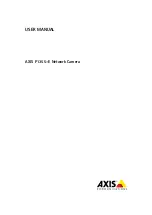
25
(in seconds). The default value is 100 seconds, meaning one beacon message every 100
seconds.
RTS Threshold:
Transmitters contending for the medium may not be aware of each
other. RTS/CTS mechanism can solve this “Hidden Node Problem”. If the packet size is
smaller than the preset RTS Threshold size, the RTS/CTS mechanism will NOT be
enabled. Select any number between 0 to 3000.
Fragmentation:
The value indicates how much of the network resources devoted to
recovering packet errors. The value should remain at its default setting of 2346 bytes. If
you have decreased this value and experience high packet error rates, you can increase it
again, but will likely decrease overall network performance.
Preamble:
Select “long” or “short”.
There is the “Long” or “Short” selection to ensure
that systems receiving the information correctly interpret when the data transmission
starts. To select “Short” Preamble may be used to minimize overhead and “Long” to
maximize the network data throughput. The default value will be set for “Long”.
Authentication:
Select “Open System”, “Shared Key” or “Both”.
In “Shared Key” mode,
it is to specify whether a network key is used to authenticate to this preferred wireless
network. Under 802.11 standard for wireless network, when a network key is used for
authentication, the network is operating in
Shared Key
authentication mode. If a network
key is not used for authentication, the network is operating in
Open System
mode.
DTIM Interval:
Stands for “Delivery Traffic Indication Message” DTIM has to do with
power management. With every beacon comes a TIM (traffic indication map). Basically,
a power-managed card wakes up and waits for a TIM. A TIM tells the client card that
there's data waiting for it at the access point. When there's data waiting, the access point
indicates this with at DTIM message. A shorter DTIM will cause the card to wake up
more often to download waiting data. A longer DTIM will keep the card in power-save
mode longer, however, since more data will be waiting, the card will have to stay on
longer to collect the waiting information. By default, it was set to 3.
CFP Period:
When CFP mode is selected a "Contention Free Period" is enabled after
every DTIM, preventing any client from transmitting during this time. The
multicast/broadcast frames are then transmitted during the CFP interval, thus resulting in
a higher probability of successful transmission as mulitcasts frames are not retransmitted
due to a collision. For most Windows networking installations, the Normal setting is
adequate. The CFP selection is available for the rare configuration that results in lost
broadcast traffic to get lost. By default, it was set to 1.
CFP MaxDuration:
the maximum possible duration of the contention free period.
Basic Rates:
By selecting 1, 2. 5.5, or 11 Mbps. By selecting 1, 2. 5.5, or 11 Mbps.
Manufacture suggests setting the rates to the lowest speed to match the slowest device on


































